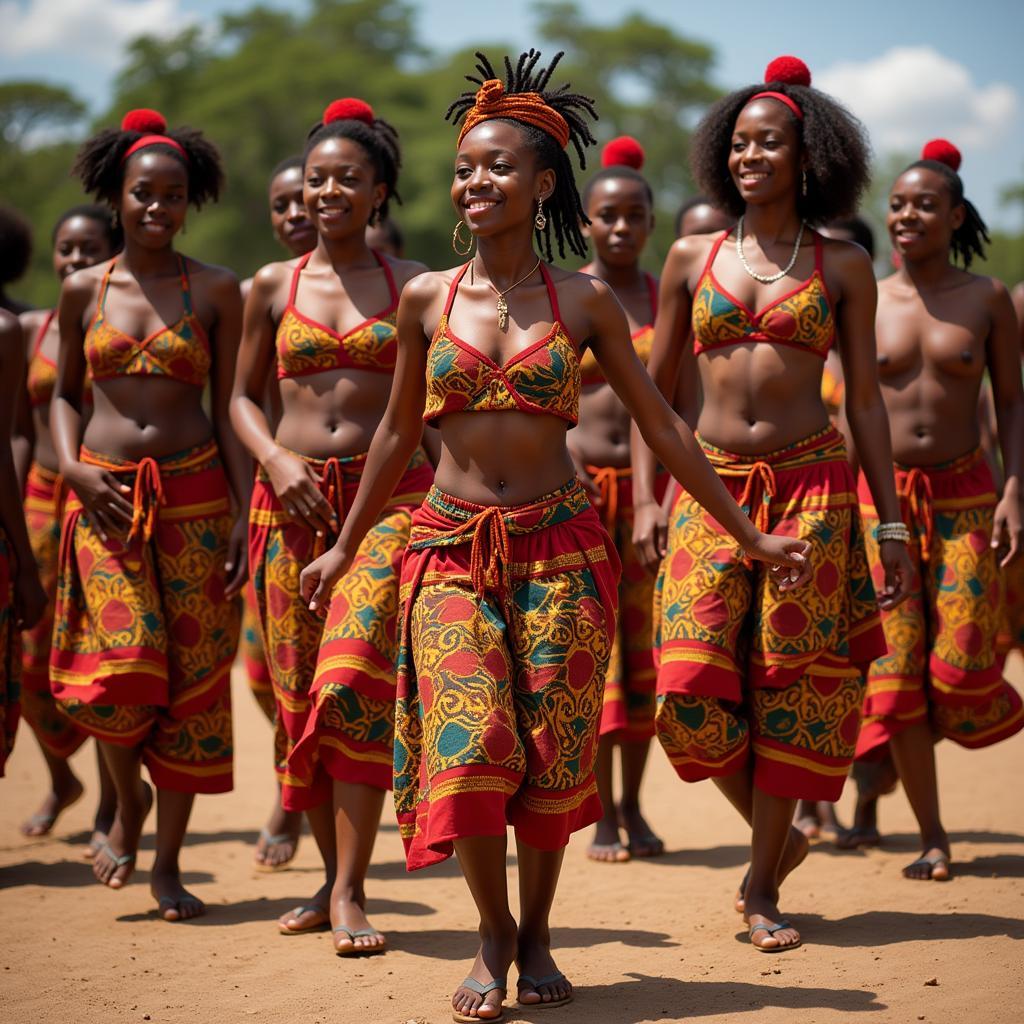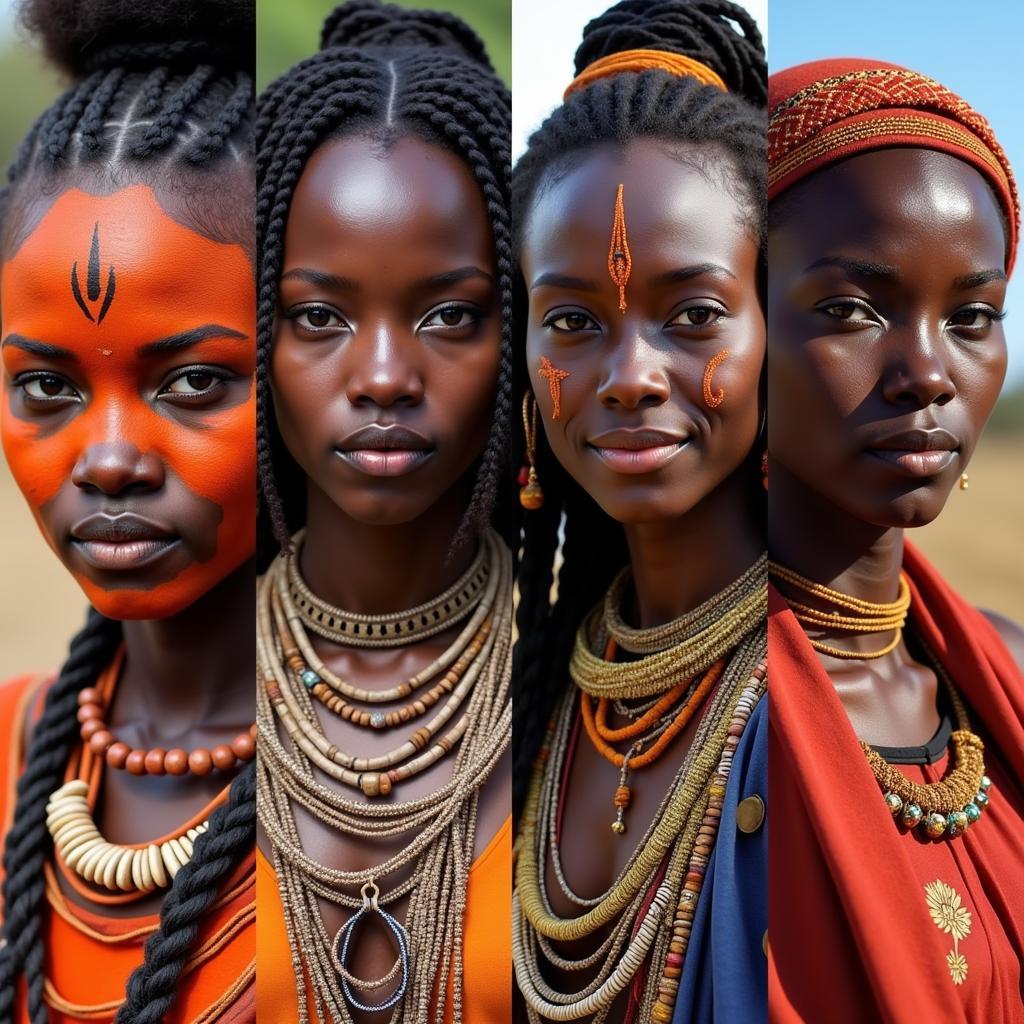The Colorful World of African Face Paint Dots: A Rich Cultural Tradition
African Face Paint Dots, also known as “ibala” or “ilamba”, are a vibrant and captivating form of body art that holds deep cultural significance across many African communities. These dots, painted in a myriad of colors and patterns, go beyond mere decoration, serving as powerful symbols of identity, status, beauty, and connection to ancestral traditions.
A Journey Through the Colorful Dots: Exploring the Diverse Meanings
The meaning and symbolism of African face paint dots vary greatly across different tribes and regions. Some common interpretations include:
-
Identity and Belonging: The unique patterns and colors of dots can distinguish individuals from different tribes, families, or social groups, solidifying their sense of belonging and community.
-
Status and Age: In some cultures, the placement and design of dots can signify a person’s age, marital status, or social rank within the community.
-
Protection and Good Luck: The colors and patterns are often associated with various deities, spirits, or ancestral figures, believed to offer protection, good luck, and blessings.
-
Ritualistic Purposes: Face paint dots play a crucial role in traditional ceremonies, festivals, and rituals, acting as a visual representation of cultural beliefs and practices.
-
Beauty and Aesthetics: Many African cultures perceive the artistic application of dots as a form of beauty, enhancing a person’s attractiveness and reflecting their personal style.
Delving Deeper: Understanding the Techniques and Materials
The application of African face paint dots is a meticulous art form, often passed down through generations. Traditional materials like:
-
Natural pigments: Grounded from minerals, plants, and other natural sources, such as ochre, charcoal, and berries.
-
Animal fats and oils: Acting as binders to help the paint adhere to the skin.
-
Water and other liquids: For consistency and ease of application.
These ingredients are mixed together to create a variety of colors and textures.
Beyond the Dots: A Celebration of Artistic Expression
African face paint dots are just one element of a rich and diverse artistic tradition. The use of body paint extends beyond the face, often incorporating elaborate patterns and designs on other parts of the body, including the chest, limbs, and hands. This artistic expression is often seen during:
-
Ceremonial occasions: Weddings, births, funerals, and other important events.
-
Festivals and celebrations: Marking joyous occasions and showcasing cultural pride.
-
Daily life: In some communities, body paint is a part of everyday life, reflecting personal style and cultural identity.
Preserving Cultural Heritage: The Importance of Traditional Arts
African face paint dots are not just a form of art but a powerful symbol of cultural heritage and identity. The practice of applying these dots connects communities to their past, preserving traditions and fostering a sense of cultural pride.
“The art of face painting is a way for us to express our culture, our beliefs, and our connection to our ancestors,” says Njeri Ngugi, a Kenyan artist and cultural practitioner.
However, the practice of traditional body art is facing challenges in modern times. The influence of globalization and modernization is leading to the decline of traditional practices in some communities. It’s important to raise awareness and appreciation for this vital cultural expression, ensuring its preservation for future generations.
Frequently Asked Questions
1. What are some of the most common colors used in African face paint dots?
Some common colors include red, ochre, white, black, brown, and yellow, derived from natural pigments.
2. How long does African face paint last on the skin?
The duration of the paint depends on the materials used and the weather conditions. Some paints can last for several days, while others may fade quicker.
3. What are the different types of patterns used in African face paint dots?
Patterns vary widely, from simple dots and lines to intricate geometric and symbolic designs.
4. Can I try African face paint myself?
While you can find many online tutorials and resources, it’s important to respect the cultural significance and avoid cultural appropriation. If you’re interested in learning more about African body art, consider seeking out workshops or classes led by experts in the field.
5. What can I do to support the preservation of African traditional arts?
You can support artists and artisans by purchasing their work, attending cultural events, and sharing information about the importance of preserving traditional arts.
This article provides a glimpse into the fascinating world of African face paint dots. Their vibrant colors and meaningful patterns tell stories of cultural identity, ancestral traditions, and the enduring spirit of African art.

